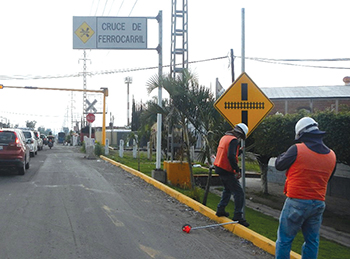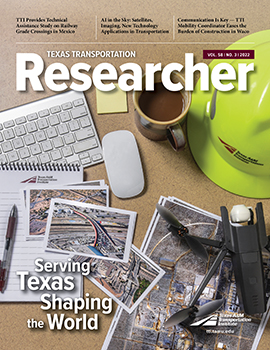Mexico’s national railway network consists of 16,700 miles of railway lines. Following a restructuring and privatization completed in 1998, the system is operated under long-term concessions to the federal government. The restructuring has resulted in the steady growth of freight rail traffic and increased efficiency. The road and rail systems intersect at more than 7,000 level crossings, with only a handful of these crossings having functional modern crossing safety technology. In 2017 alone, there were 718 level crossing accidents involving trains and automobiles or pedestrians. Rail and road traffic in Mexico is projected to continue to grow, increasing the risk of these types of accidents. Mexico’s Secretariat of Communications and Transportation has identified accidents at railroad level crossings as a critical public safety issue that must be addressed.

The Texas A&M Transportation Institute (TTI) served as the primary contractor for a recently completed technical assistance (TA) study for the Mexican Railroad Association (AMF), funded by the U.S. Trade and Development Agency. Researchers from TTI’s Mexico City urban office worked with Mexican and U.S. rail transport experts to analyze the safety situation at railway grade crossings (e.g., intersections where a railway line crosses a road or path at grade) in Mexico. Researchers then developed a financial plan that would allow the modernization and installation of technological devices for the railway network in the coming years.
“Safety and security are paramount for any railway system,” says Juan Villa, TTI research scientist and program manager of TTI’s International Trade and Border Transportation Program. “Although we’ve only recently completed the TA, this study will hopefully be a great contribution to support the development of safety at railway grade crossings in Mexico.”
The study included the identification and review of existing studies, as well as the evaluation and comparison of the different standards, laws, manuals and guidelines on railway grade crossings in Mexico and the United States. The evaluation was critical in providing researchers with enough information to assess the railway signage needs in Mexico and develop an investment plan to increase safety at railway grade crossings.
The scope of the TA study also included a cost-benefits analysis, a review of crash statistics and reports related to safety at crossings, and an analysis of the documents related to the processes, guidelines and criteria to be considered in the development of the investment plan.
“Collisions between highway vehicles and trains have always been a main source of injuries and fatalities in the railroad industry,” notes Villa. “We’re hopeful that this study will help Mexican officials identify unsafe railway grade crossings and prioritize the crossings that need to be addressed, while also accounting for adequate financial planning.”
Altogether, the TA study presents railway practitioners in Mexico with:
- detailed field studies and technical evaluations of 63 railroad crossings identified by AMF, with detailed engineering drawings for the solution at these crossings;
- cost estimates for the 63 crossings and evaluation of more than 7,500 level crossings of the Mexican Railway System to estimate intervention costs; and
- an analysis of potential funding sources to provide recommendations for the implementation of the solutions and investment for grade-crossing improvements over the next seven years.


